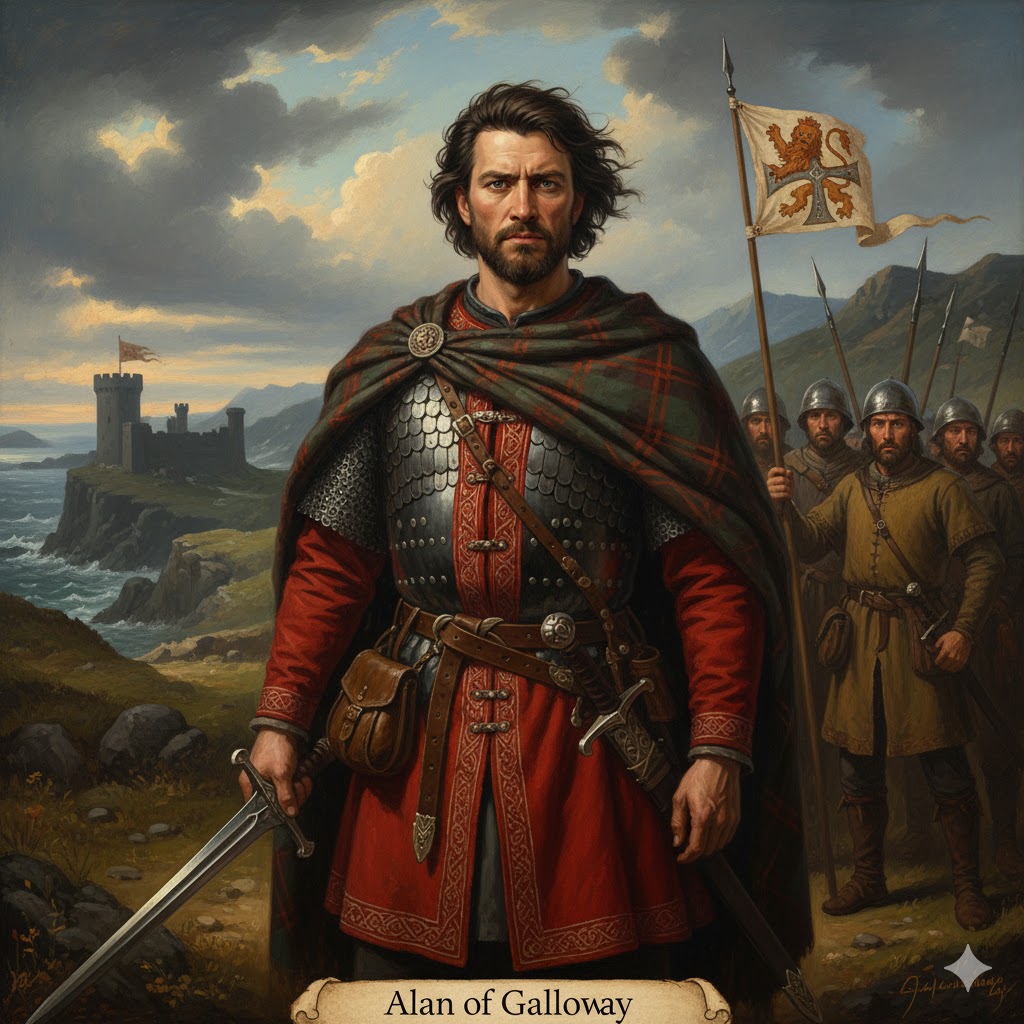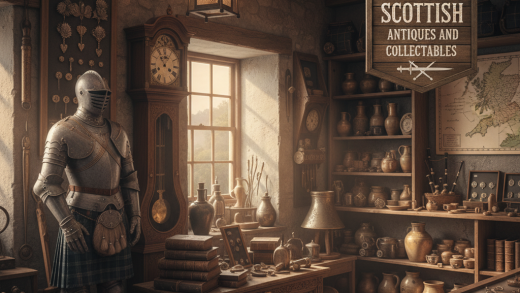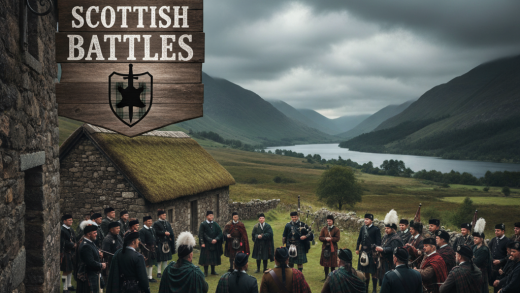
Alan of Galloway (c. 1199 – 1234) was an immensely powerful and influential figure in 13th-century Scotland. He was the last independent Lord of Galloway, a region in southwestern Scotland that historically maintained a distinct Gaelic identity and often operated with significant autonomy from the Scottish Crown.
Key Aspects of Alan of Galloway’s Life and Significance:
- Last Independent Lord of Galloway: Alan inherited the Lordship of Galloway from his father, Roland, Lord of Galloway. The Lords of Galloway, for centuries, were effectively semi-independent rulers, similar to petty kings, often navigating between the Scottish and English crowns. Alan was the last to wield such extensive power before Galloway was fully integrated into the Scottish kingdom.
- Vast Power and Influence: Alan was one of the wealthiest and most influential magnates of his time. His territories included not only Galloway but also large tracts of land in Ireland (through his wife’s inheritance and his own conquests) and England. He was a major figure at the court of King Alexander II of Scotland.
- Military Prowess and Mercenaries: Alan was a formidable military leader. He regularly provided troops to both the Scottish and English kings for their campaigns, often leading his own formidable force of Galloway spearmen. He was also involved in Irish politics, making his own claims and leading military expeditions there.
- Marriage Alliances: Like many powerful lords, Alan used strategic marriages to secure his position and expand his influence:
- First Marriage: He married the daughter of Roger de Lacy, Constable of Chester, gaining lands in England.
- Second Marriage: He married Margaret of Huntingdon, a granddaughter of David, Earl of Huntingdon (King William the Lion’s brother), which connected him to the Scottish royal family.
- Third Marriage: He married the daughter of Hugh de Lacy, Earl of Ulster, which gave him significant claims and influence in Ireland.
- The Succession Crisis and the End of an Independent Galloway: Alan had no legitimate male heir who survived him. He had three daughters:
- Helen, who married Roger de Quincy, 2nd Earl of Winchester.Cristina, who married William de Forz, 4th Earl of Albemarle.Dervorguilla, who married John de Balliol. Their son, John Balliol, would later become King of Scotland.
Alan of Galloway’s life is a fascinating study of a powerful Gaelic magnate navigating the complex political landscape of 13th-century Britain and Ireland, ultimately leading to the demise of an ancient, semi-independent principality.
Discover more from WILLIAMS WRITINGS
Subscribe to get the latest posts sent to your email.




